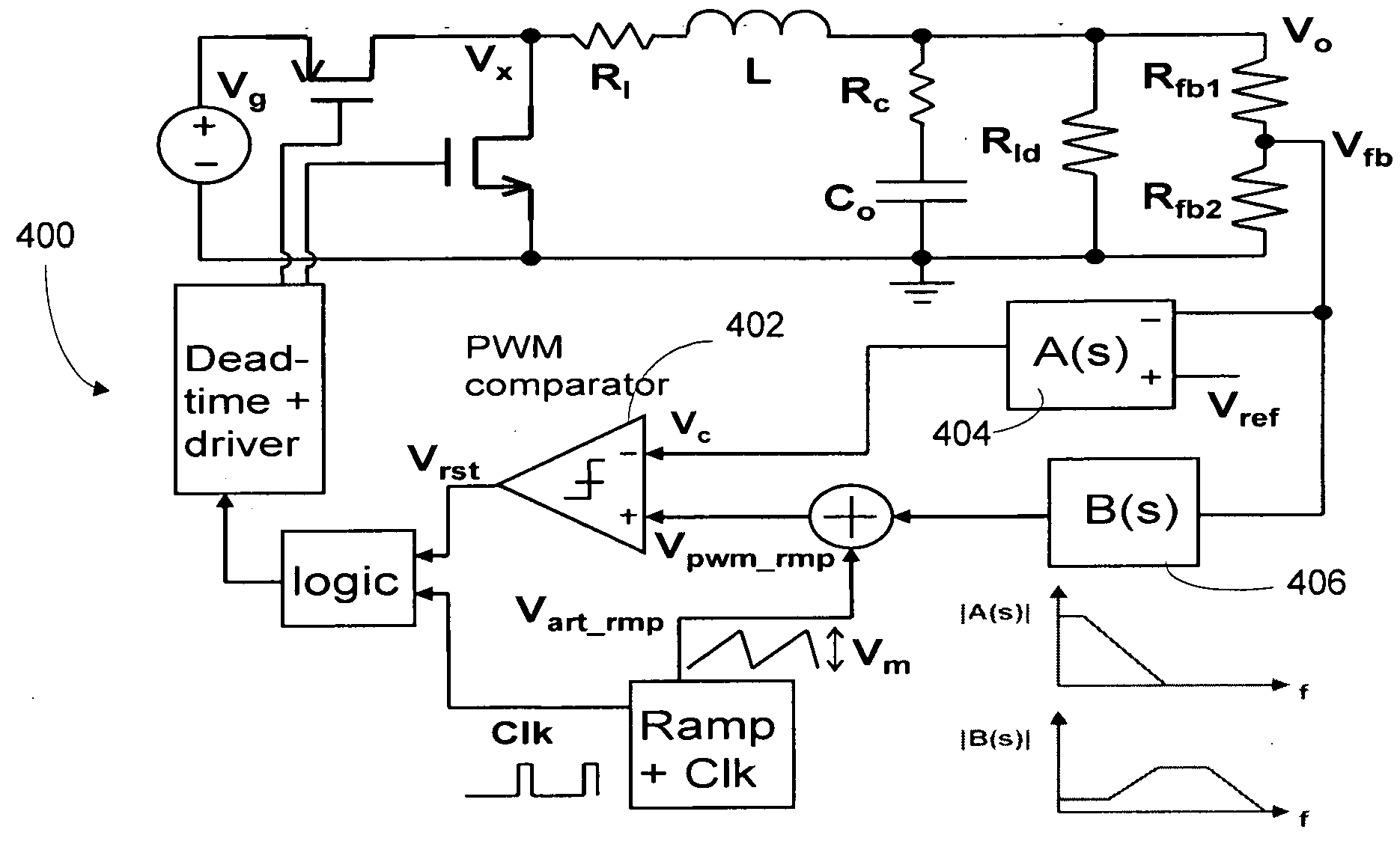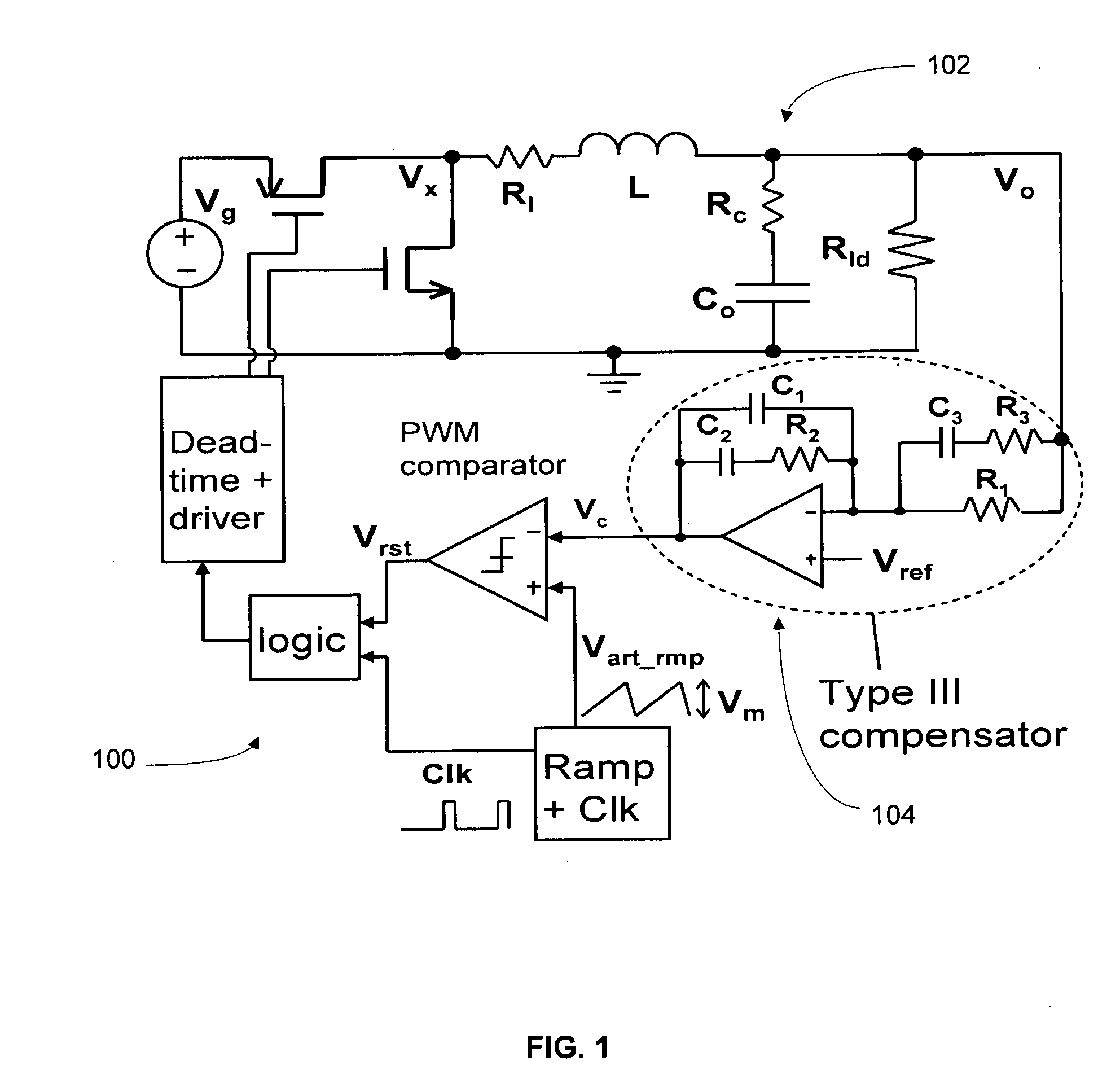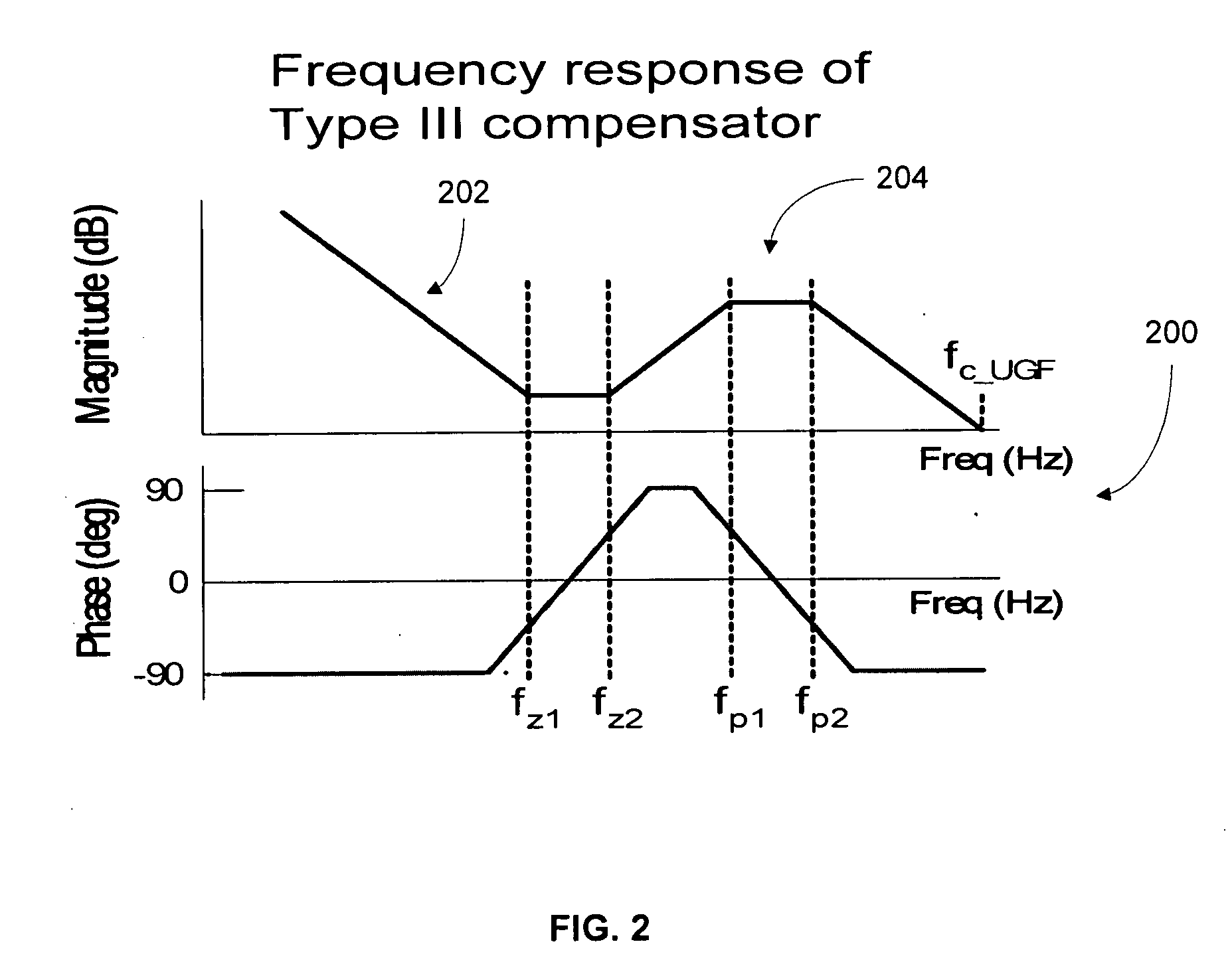Frequency compensation based on dual signal paths for voltage-mode switching regulators
a voltage-mode switching regulator and frequency compensation technology, which is applied in the direction of dc-dc conversion, climate sustainability, power conversion systems, etc., can solve the problems of reducing the efficiency of voltage-mode switching regulators. , to achieve the effect of improving circuit design
- Summary
- Abstract
- Description
- Claims
- Application Information
AI Technical Summary
Benefits of technology
Problems solved by technology
Method used
Image
Examples
Embodiment Construction
[0027]The following examples further illustrate the invention but, of course, should not be construed as in any way limiting its scope.
[0028]With reference to FIGS. 1-3, a brief theory of Type III compensation is explained using a Buck converter 100 illustrated in FIG. 1 as an example. Since there is a complex pole due to the L-C output filter 102 of the Buck converter 100, phase lag increases sharply at the complex pole frequency, fLCo. The loop gain crossover frequency must be limited to one-tenth of fLCo to ensure enough phase margin if integrator type compensator (Type I) is used. Type III compensation is often employed to extend the crossover frequency and improve the phase margin of the loop gain. It generates two zeros to provide phase boost and offsets the complex pole phase lag. In this way, the crossover frequency can be extended beyond fLCo (still limited to ˜20% of switching frequency for a robust system).
[0029]FIG. 2 shows the frequency response 200 of a Type III compen...
PUM
 Login to View More
Login to View More Abstract
Description
Claims
Application Information
 Login to View More
Login to View More - R&D
- Intellectual Property
- Life Sciences
- Materials
- Tech Scout
- Unparalleled Data Quality
- Higher Quality Content
- 60% Fewer Hallucinations
Browse by: Latest US Patents, China's latest patents, Technical Efficacy Thesaurus, Application Domain, Technology Topic, Popular Technical Reports.
© 2025 PatSnap. All rights reserved.Legal|Privacy policy|Modern Slavery Act Transparency Statement|Sitemap|About US| Contact US: help@patsnap.com



